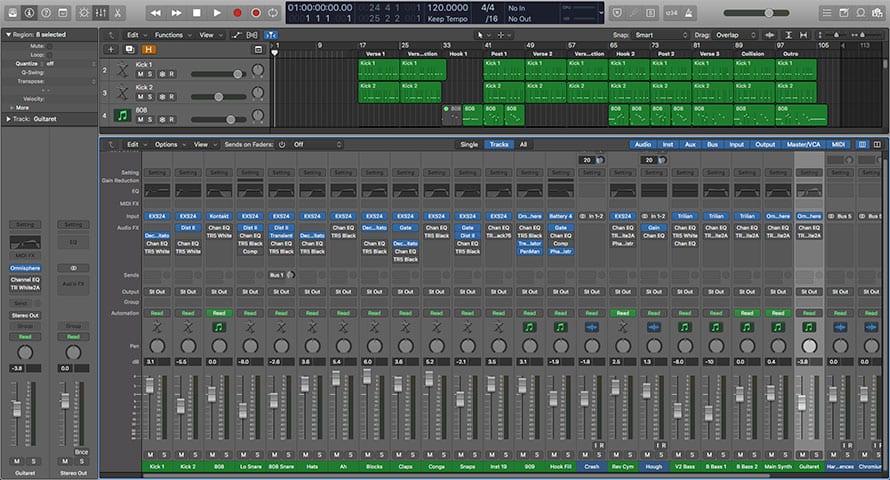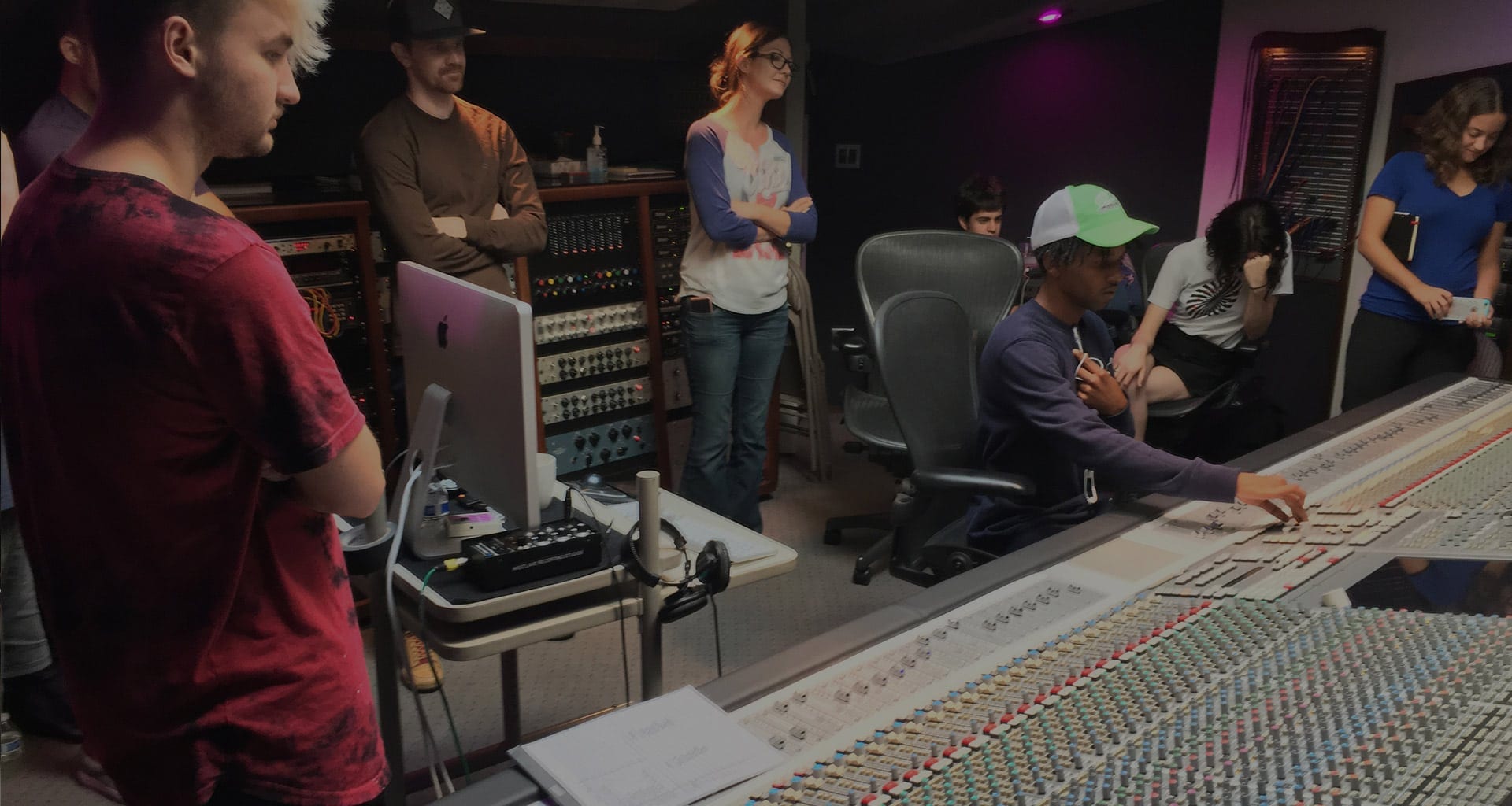In the final part of this four-part series, Crē•8 Music Academy Director of Education Doug Fenske discusses when to begin a song in Logic Pro and Pro Tools, in addition how to move back and forth between the two DAW tools.
A common question I’m asked with regard to this topic: Should I start my song in Logic or Pro Tools? The answer to that varies. Now that we know our tools, you should select whichever DAW will compliment the inspiration for the song. For example, say the idea arrives in the form of an acoustic guitar lick or chord progression. That sounds like a job for Pro Tools, as the takes and ideas can be easily fleshed out, comped and arranged. If the idea is for a drum groove, synth line or piano chord progression, Logic Pro should be the choice This also applies to experimenting in a blank session with a powerful instrument like Omnisphere.
There was a time when our industry experimented with “OMF” files, which were an attempt to allow different DAW’s to communicate all related information with each other. This proved to be a subpar experience, as information like track names, automation, plug-ins and markers translated in disasteros fashion, often times leaving the user with more work instead of less. In modern times, “OMF” may be considered some sort of abbreviated messaging slang. Frankly, that use would be more effective than the actual intended purpose of the file.
Moving back and forth between the DAW’s is not overtly challenging, but it does require diligence and attention. Say we began in Pro Tools with that acoustic guitar idea I mentioned. After the idea is fleshed out and on the grid, it can be bounced or exported into a 24 bit, 48kHz wav file (note: 48kHz is the most common sample rate during production for its increased resolution and manageable file size). Create a session in Logic Pro at 24 bit, 48kHz, import the guitar file(s) and begin drums, percussion or any sort of accompaniment you desire. After the instrumentation has been completed (at least in demo form), export the entire multi-track out of Logic and import the files into the Pro Tools session that contains the acoustic guitar idea.

Ideas that begin in Logic Pro can be nurtured and developed in the same way until just before the vocal recording session. At this point, a stereo bounce of the instrumental from Logic should be imported into Pro Tools. High-level producers then record, comp, tune and bounce an acapella from the Pro Tools session, import it into Logic, finish the instrumentation/composition, then perform the multi-track export procedure from Logic to Pro Tools for final editing and mixing.

We see plenty of online content that is related to DAW’s (DAW-War memes, rabid disagreements, etc). In this author’s opinion, that type of mindset is a bit short-sighted and doesn’t adhere to a professional workflow. We should be approaching our use of recording and production software with an objective in mind, then select the appropriate tool (read: DAW) to achieve the task efficiently. It is the path of least resistance, whereas trying to retrofit a task into a DAW that may not be fully equipped to handle said task can be a very frustrating experience.
The mindset of a multi-DAW environment is a gift that technology has only recently bestowed upon us, ushering in the golden age of the DAW. Being open to that mindset and workflow is just as powerful as the DAW’s themselves. Embrace this approach and realize your potential by understanding the tools of the trade.
Activate your musical instincts and learn to use Untagged Loops, Flex Pitch and Tracks Stacks in our ACTIV•8 music production course at Crē•8 Music Academy. Click here or fill out the form below to start a conversation with one of our highly trained admissions representatives and find out how we can help YOU take your music to the next level.



Leave a Reply